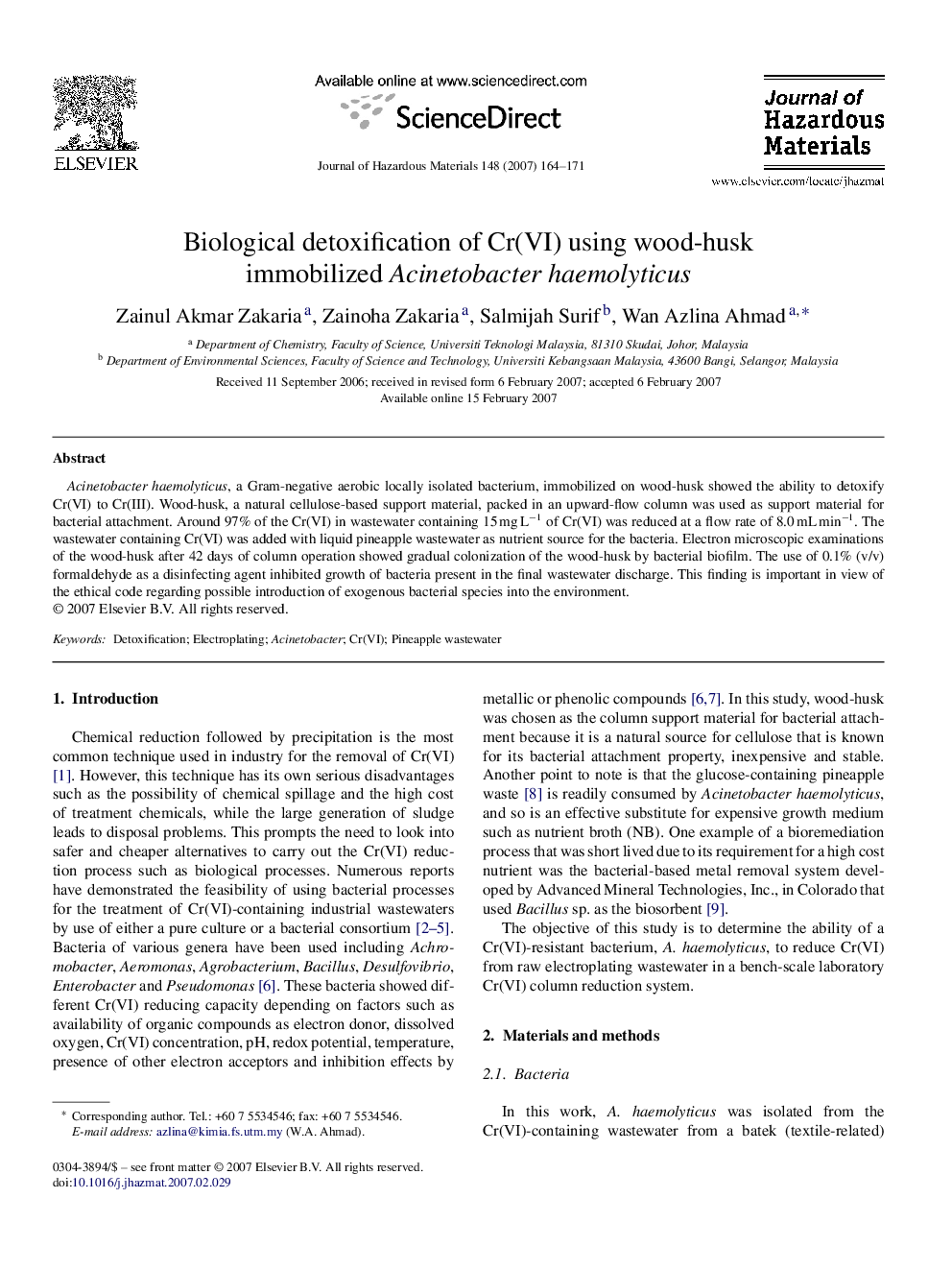| Article ID | Journal | Published Year | Pages | File Type |
|---|---|---|---|---|
| 584390 | Journal of Hazardous Materials | 2007 | 8 Pages |
Abstract
Acinetobacter haemolyticus, a Gram-negative aerobic locally isolated bacterium, immobilized on wood-husk showed the ability to detoxify Cr(VI) to Cr(III). Wood-husk, a natural cellulose-based support material, packed in an upward-flow column was used as support material for bacterial attachment. Around 97% of the Cr(VI) in wastewater containing 15 mg Lâ1 of Cr(VI) was reduced at a flow rate of 8.0 mL minâ1. The wastewater containing Cr(VI) was added with liquid pineapple wastewater as nutrient source for the bacteria. Electron microscopic examinations of the wood-husk after 42 days of column operation showed gradual colonization of the wood-husk by bacterial biofilm. The use of 0.1% (v/v) formaldehyde as a disinfecting agent inhibited growth of bacteria present in the final wastewater discharge. This finding is important in view of the ethical code regarding possible introduction of exogenous bacterial species into the environment.
Related Topics
Physical Sciences and Engineering
Chemical Engineering
Chemical Health and Safety
Authors
Zainul Akmar Zakaria, Zainoha Zakaria, Salmijah Surif, Wan Azlina Ahmad,
